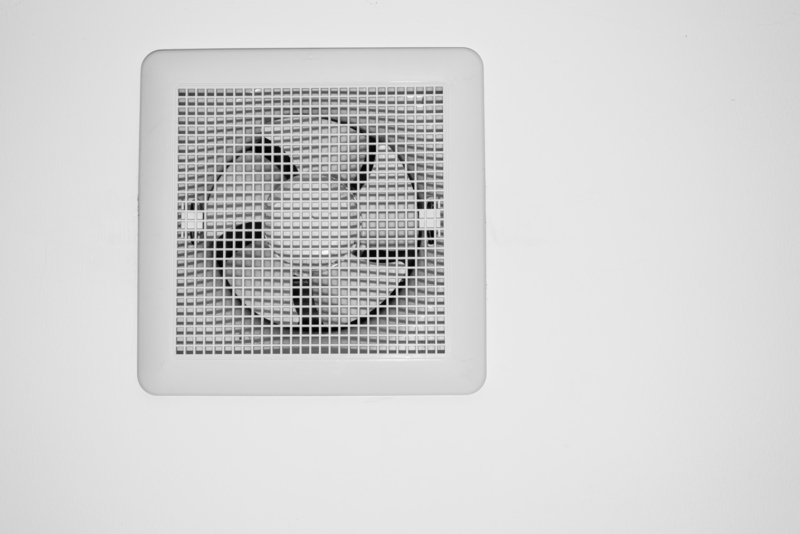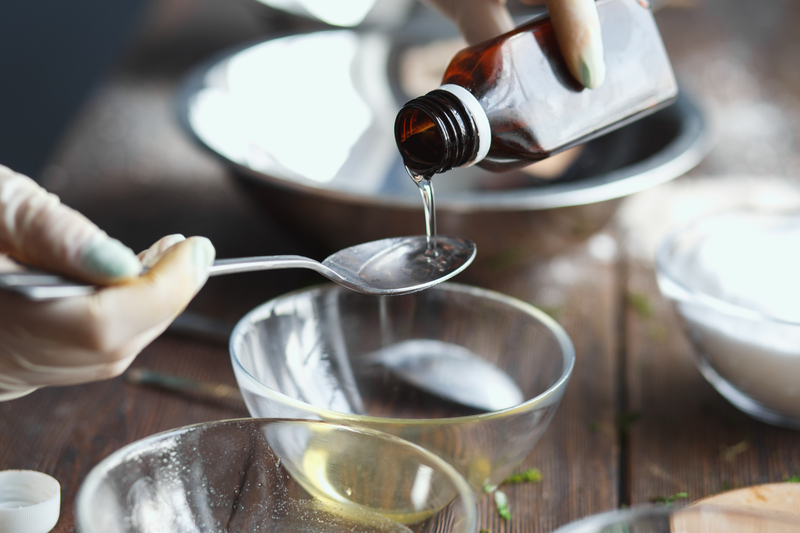How to Care for Velvet Curtains and Preserve Their Beauty
Posted on 13/06/2025
How to Care for Velvet Curtains and Preserve Their Beauty
Velvet curtains bring a touch of luxury, elegance, and sophistication to any room. However, their opulent appearance comes with the responsibility of special care to maintain their unique texture and lasting allure. If you've recently invested in these majestic drapes, understanding how to care for velvet curtains and preserve their beauty is essential. In this comprehensive guide, you will learn every step needed to ensure your velvet curtains remain as stunning as the day you hung them.

Understanding Velvet: What Makes It So Special?
Before diving into the care instructions, let's briefly discuss what makes velvet fabric so distinctive. Velvet is a woven tufted fabric, renowned for its dense pile of cut fibers. This results in its signature soft, plush feel and radiant appearance. While breathtakingly beautiful and glamorous, the unique construction of velvet also makes it prone to marks, dust, and crushing. These factors underscore the importance of specialized velvet curtain care routines.
Types of Velvet Used in Curtains
- Cotton Velvet: Soft and absorbent, requiring careful handling and cleaning.
- Silk Velvet: Luxurious but delicate; typically demands professional care.
- Synthetic Velvet (Polyester or Nylon): More durable and often easier to maintain than natural fibers.
- Crushed Velvet: Features a textured finish which can hide some marks but still needs gentle treatment.
Knowing which type of velvet you have can help you tailor your velvet curtain maintenance strategy accordingly.
Regular Care and Maintenance: Keeping Velvet Curtains Spotless
Routine upkeep is the best way to keep your velvet drapes looking pristine. Here's how you can perform regular velvet curtain cleaning without causing damage:
1. Dusting Your Velvet Curtains
- Use a soft-bristled brush or a clothes brush to gently remove surface dust.
- Alternatively, employ the upholstery attachment on your vacuum cleaner at the lowest suction setting.
- Brush in the direction of the nap (the natural direction of the velvet fibers) to avoid crushing the pile.
Tip: "Nap" refers to the way that the velvet fibers naturally lie. Rubbing or brushing against the nap may damage or permanently crush the fibers.
2. Shaking Out Debris
- Every few weeks, take down the curtains (as long as the weight isn't excessive) and give them a gentle shake outdoors to remove loose dirt and dust.
- This also helps avoid a buildup of allergens in the home.
3. Spot Cleaning Velvet Curtains
Accidents will inevitably happen. To address stains quickly, follow these steps:
- Blot (never rub) spills immediately with a clean, dry, white cloth to soak up as much liquid as possible.
- If the stain persists, lightly dab the area with a damp cloth. Use a mild detergent or a mix of water and distilled white vinegar for tough stains.
- Always test any cleaning solution on an inconspicuous area of the curtain first.
- Avoid saturating the fabric, as excessive moisture may damage velvet's backing.
4. Brushing and Fluffing
- After cleaning or if the velvet piles look flat, gently fluff the fibers with a soft brush.
- Allow the nap to dry thoroughly before brushing to restore the plush look.
Deep Cleaning Velvet Curtains
No matter how diligent you are with regular upkeep, your velvet curtains will eventually require a deeper clean. Because velvet is sensitive to water and improper handling, consider these options:
Professional Velvet Curtain Cleaning
- For most velvet curtains, especially those made from cotton or silk, professional dry cleaning is the safest option.
- Look for cleaning services that specifically advertise experience with velvet fabrics.
- Avoid laundromats or general cleaners who do not guarantee care for delicate materials.
Cleaning Synthetic Velvet at Home
- Check the manufacturer's care label before attempting any at-home wash.
- Synthetic velvets, such as polyester, may sometimes be hand-washed or cleaned on a gentle cycle.
- Use cold water and a mild detergent.
- Air-dry, laying the curtain flat to prevent stretching or warping.
Note: Never wring, twist, or tumble dry velvet curtains, as this can distort the texture and shape of the fabric.
Stain Removal: Addressing Common Velvet Curtain Issues
How to Remove Water Stains from Velvet Curtains
- Lightly dampen the area with distilled water and gently brush while drying with a hairdryer on a low setting.
- This helps even out the appearance of water spots and prevents further markings.
Dealing With Oil and Grease Stains
- Sprinkle cornstarch or talcum powder on the stain and allow it to sit for several hours (or overnight) to absorb the oil.
- Brush away the powder, then treat with a mild detergent if needed.
What to Do About Crushed Pile Marks
- Hold a steam iron several inches away from the velvet (never touch the fabric directly with the iron).
- Allow the steam to relax the fibers, then gently brush with a soft-bristled brush to lift the nap.
Preserving the Beauty of Velvet Curtains: Preventive Measures
Prevention is as important as cleaning. To keep velvet curtains looking new and prolong their lifespan, adopt these habits:
1. Avoid Direct Sunlight
- Prolonged exposure to sunlight may cause velvet curtain colors to fade or lose their luster.
- Use sheer layers or blinds behind your velvet drapes to filter out UV rays.
2. Maintain Good Air Circulation
- Make sure windows and rooms are well-ventilated to help prevent moisture buildup, which can lead to mildew on velvet.
- If possible, open windows regularly or use a dehumidifier in humid climates.
3. Rotate and Adjust Curtains
- Switch the side of your velvet curtains periodically to even out exposure to sunlight and dust.
- This helps ensure a uniform appearance and reduces wear in frequently handled areas.
4. Avoid Excessive Handling
- Try to touch velvet curtains as little as possible, especially with dirty or oily hands.
- This minimizes the transfer of oils and potential crushing of the pile.
Seasonal Tips for Velvet Curtain Care
When the seasons change, consider these additional care tips for velvet curtains:
Spring & Summer
- Remove and clean curtains to eliminate pollen and dust that may have accumulated.
- Store velvet curtains in a cool, dark, and dry place if you switch them out for lightweight drapes in warmer months.
Fall & Winter
- Inspect for any mildew or moisture problems that might occur due to reduced ventilation.
- Clean or air out curtains to remove musty odors before rehanging.
How to Store Velvet Curtains Properly
If you need to store your velvet curtains--whether for a season or during a home renovation--it's vital to follow these steps to prevent damage:
- Ensure curtains are completely clean and dry before storage. Any lingering moisture can result in mold or mildew.
- Never fold velvet tightly; instead, roll the curtains around a large, acid-free cardboard tube to prevent creasing and crushing of the pile.
- Wrap the curtains in a cotton sheet or muslin rather than plastic, which can trap moisture and cause yellowing.
- Store in a cool, dry closet or wardrobe away from direct sunlight and away from pests.
Common Mistakes to Avoid With Velvet Curtain Care
Even with the best intentions, there are some important "don'ts" when it comes to caring for velvet drapes:
- Do not use harsh chemicals or bleach. These will damage the fibers and ruin the color.
- Avoid machine or tumble drying, as the heat and agitation can deform the fabric.
- Never iron directly on velvet. The weight and heat can crush the pile permanently.
- Don't ignore stains or allow liquids to dry on the fabric. Immediate attention is important for stain prevention and removal.
- Never store velvet curtains while damp or dirty. This invites mildew and irreversible damage.

Frequently Asked Questions about Velvet Curtain Care
Can I wash velvet curtains in the washing machine?
Answer: Generally, machine washing is not recommended for natural velvet. Some synthetic velvets may be washable, but always check the manufacturer's label. When in doubt, opt for professional dry cleaning.
How do I restore the sheen on my velvet curtains?
Answer: Use a handheld steamer to gently lift the nap and revive the fabric's natural sheen. Avoid direct heat and always brush along the nap after steaming.
Are velvet curtains suitable for homes with pets?
Answer: Velvet can attract pet hair and may be easily marked by claws. If you have pets, brush or vacuum the curtains regularly and try to keep animals away from the drapes where possible.
What's the best way to keep velvet curtains from wrinkling?
Answer: Hanging velvet curtains straight from the rod allows their weight to naturally remove most wrinkles. For stubborn creases, a gentle steaming is the safest option.
Conclusion: Enjoy the Lasting Beauty of Your Velvet Curtains
Velvet curtains may require a little more attention than standard drapes, but their rich beauty and timeless elegance are well worth the effort. By following a dedicated routine for velvet curtain maintenance, performing prompt spot cleaning, and knowing when to trust professionals, you can ensure your luxurious drapes stay stunning for years to come.
Remember: Never sacrifice the fabric's integrity by using harsh chemicals or improper techniques. Instead, embrace gentle, consistent care to keep your velvet curtains looking as opulent as the first day they graced your home.
With these proven tips, you'll enjoy the soft glow and dramatic flow of your velvet curtains while preserving their beauty for every season, every style, and every cherished moment in your life.




